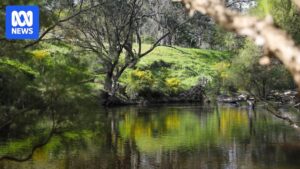
In a startling revelation, the Australian Taxation Office (ATO) has disclosed that 91 Australians who earned over $1 million in the 2022-23 financial year paid no tax. This data highlights significant income disparities and the use of tax deductions by the wealthy to minimize their tax liabilities.
The figures show that the highest earners are concentrated in Sydney’s affluent eastern suburbs, such as Darling Point, Edgecliff, Rushcutters, and Point Piper. These areas are home to some of Australia’s wealthiest individuals, who have managed to reduce their tax bills to zero through various deductions.
Millionaires and Tax Deductions
An analysis conducted by the Australia Institute and the ABC reveals that these 91 millionaires claimed a staggering $390 million in deductions. A significant portion of these deductions, amounting to $291 million, came from donations to tax-deductible charities, averaging $15.4 million per individual. Additionally, expenses for managing tax affairs accounted for $62.8 million in deductions, averaging $690,815 per person.
“This shows the nation’s wealthiest can use the tax system to reduce tax bills to zero,” stated Greg Jericho, chief economist at the Australia Institute. “This is particularly concerning as we debate changes to superannuation taxation for those with balances over $3 million.”
Jericho further explained that the wealthy often employ high-priced tax lawyers and accountants to navigate the tax system effectively. This practice raises questions about equity and fairness in the tax system, especially during discussions on tax reforms.
Rental Income and Property Ownership
In addition to the focus on millionaires, the ATO data also sheds light on rental income across the country. In 2022-23, 2.3 million Australians declared rental income, with a majority owning only one investment property. Approximately 71% of landlords, or just over 1.6 million individuals, fall into this category.
The data also indicates that 19% of landlords own two properties, 6% own three, and 4% own four properties. A small number of landlords, around 18,837, own five investment properties, while 19,389 individuals own six or more.
Overall net rental income for 2022–23 was $1.6 billion, a significant drop from $6.0 billion in the previous year. The average total net rent median was $52, with the average at $696.
Despite the decline in net rental income, more landlords reported profits than losses. Among the 1,130,000 landlords who experienced losses, the median loss was $5,487, and the average was $9,346. These figures highlight the financial dynamics within the rental market and the impact of tax deductions on property investments.
Income Disparities Across Postcodes
The ATO’s statistics also reveal stark income disparities across different postcodes. Sydney’s eastern suburbs dominate the list of highest-earning areas, with postcode 2027 (encompassing Darling Point, Edgecliff, Rushcutters, and Point Piper) boasting the highest average taxable income of $279,712. This is followed by Double Bay and Woollahra.
In contrast, some of the lowest-income postcodes are associated with areas with large student populations. For instance, postcode 2308, covering the University of Newcastle’s main campus at Callaghan, recorded an average taxable income of $20,878. Similarly, postcode 2052, encompassing the University of NSW area, had an average taxable income of $20,892.
Highest and Lowest Paid Occupations
Since 2010-11, surgeons have consistently been the highest-paid professionals in Australia. In 2022-23, 4,247 surgeons reported an average taxable income of $472,475. Anaesthetists followed closely, with 3,658 individuals earning an average of $447,193. Financial dealers, numbering 5,147, reported average incomes of $355,233.
Conversely, the lowest-paid occupations included personal carers and assistants, with an average income of $22,533, followed by fast food cooks and hospitality apprentices earning $22,722 and $25,358, respectively.
Broader Economic Implications
The ATO’s data also provides insights into broader economic trends. In 2022-23, over 16 million Australians lodged tax returns, with 10.3 million claiming a total of $28.3 billion in work-related expenses, averaging $2,739 per person. The average superannuation account balance increased to $173,000 from $164,000 the previous year.
Corporate tax contributions also saw a rise, with net tax from companies increasing by 9.2% to $140 billion. The mining industry led this growth, contributing 39% of the net tax, with its liabilities growing from $42.3 billion to $54.4 billion. Additionally, the luxury car tax saw a 17.9% increase, reaching $1,153 million.
The release of this data underscores the complexities and disparities within Australia’s tax system. As debates on tax reform continue, these figures provide crucial insights into the financial behaviors of both individuals and corporations, highlighting areas for potential policy adjustments.







